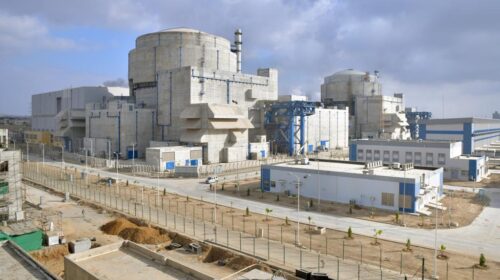PAEC connects 1100MW K-3 nuclear power plant to grid
ISLAMABAD/KARACHI, March 04, 2022: Pakistan Atomic Energy Commission (PAEC) has connected Karachi Nuclear Power Plant Unit-3 (K-3) to the national grid. The 1100 megawatts generation capacity nuclear power plant (NPP) had achieved criticality on 21st February and was undergoing certain safety tests and procedures before it could finally be connected to the grid. The plant has been connected to the grid on testing basis and is expected to be inaugurated soon after attaining full power.
It is pertinent to mention that K-3 is the second NPP in Pakistan with the generation capacity of 1100 MW and its addition to the national grid will surely help reduce electricity tariff in the country. K-3 is one of the two similar NPPs located near Karachi. The other one, named K-2 was inaugurated by the Prime Minister of Pakistan, Imran Khan on 21st May last year.
The ground breaking of the project was performed on 26th November 2013 and the construction started after getting approval of Pakistan Nuclear Regulatory Authority (PNRA). The fuel loading of the plant started in December 2021 after getting clearance from the PNRA.
PAEC is now running six NPPs in the country. Two of them are located in Karachi and are named K-2 and K-3, while four in District Mianwali are named Chashma Nuclear Power Plant Unit 1-4. Earlier, the collective generation capacity of all PAEC-operated NPPs was over 2,400 MWs. The addition of K-3 in the national grid will enhance the generation capacity of nuclear power plants in the country to over 3500 MW, substantially improving the overall share of nuclear power in the energy mix.
Nuclear energy is safe, reliable, and an important source of electricity with zero carbon emission besides being economically competitive.
Chairman PAEC Muhammad Naeem (HI, SI) has congratulated the project’s team and the whole nation on this occasion and hoped that PAEC will continue to serve the nation by operating its NPPs under the safeguards of International Atomic Energy Agency (IAEA).
Karachi Nuclear Power Plant Unit-3 K3 connected to National Grid.






